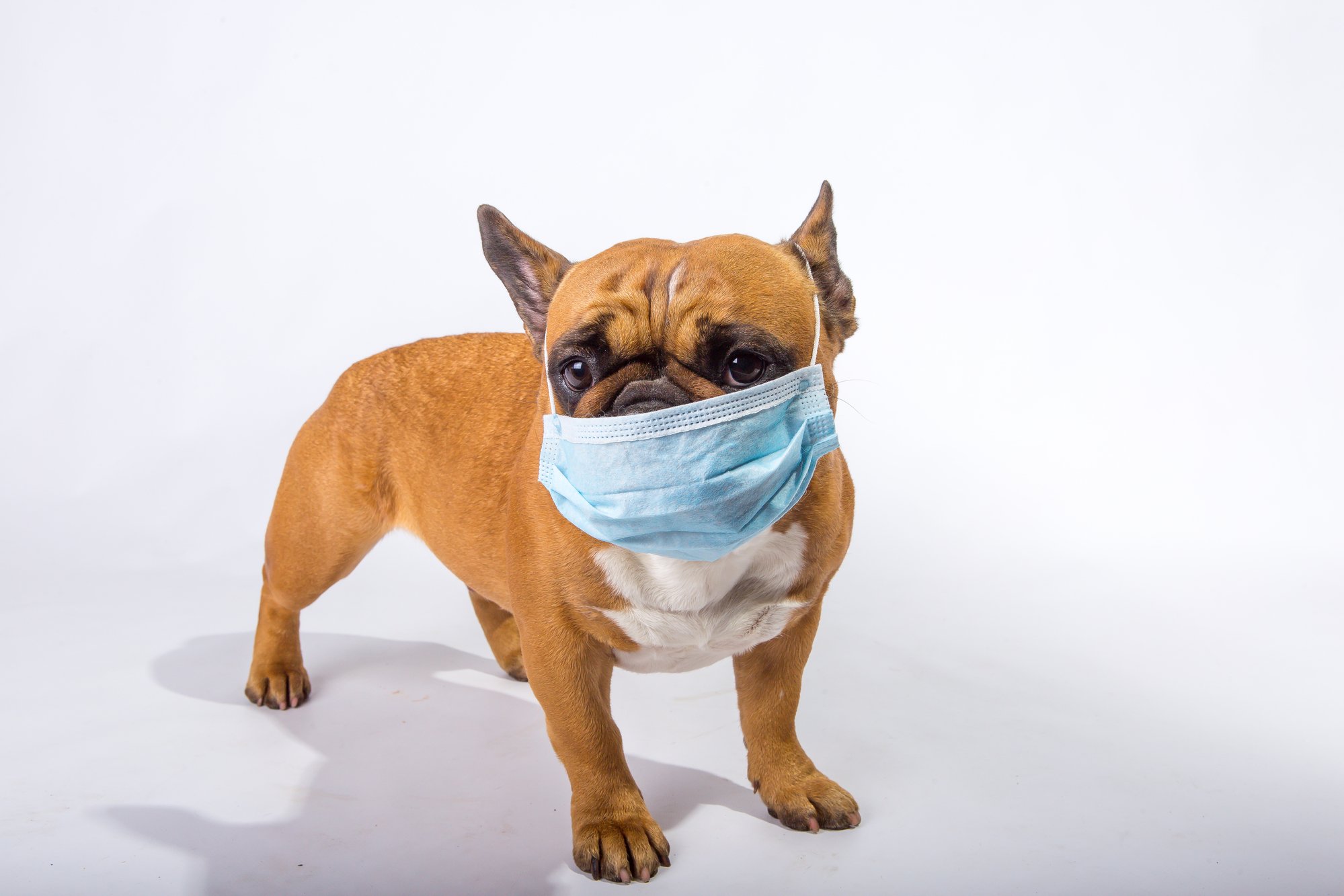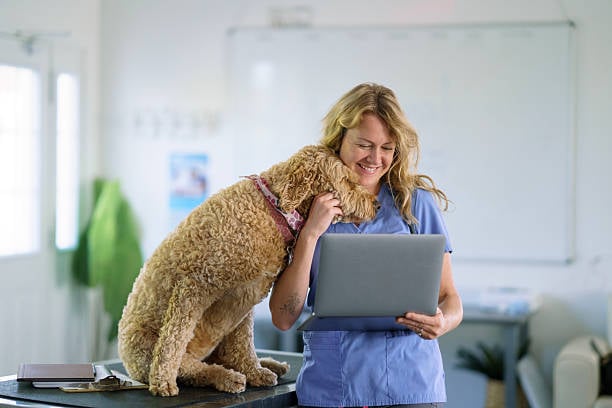As COVID-19 progresses, it’s hard to ignore the far-reaching effects of the pandemic.
Whether it’s ongoing healthcare concerns or the continuing economic downturn, every corner of society has been affected by the virus. As a pet-care business owner, you’re likely all-too-familiar with COVID-19’s thrall.
For many, pet care is an essential service. On one side, busy clients rely on the safe, engaging space of a dog daycare to care for their pets while working or otherwise engaged. On the other side, pet-care staff rely on the same steady income that’s been their livelihood prior to the pandemic.
The existence of the pandemic doesn’t change either of those facts. However, with social distancing requirements and shelter in place orders, the pandemic does directly impact those who rely on your pet-care business. COVID-19 is a mysterious virus and your highest priority must always be the safety of staff and customers.
As a pet-care business, your goal should be to continue providing these essential services while also remaining safe for staff, clients, and animals in your care. Through this guide, we’re going to explore common pet-care business concerns around the COVID-19 pandemic and Gingr’s recommendations for how your business can continue operating safely for all involved.
Let’s get started.
Can pet-care businesses remain open during COVID-19?
Technically, whether your pet-care business can remain open during the pandemic depends on the orders and regulations put in place by your city, county, or state government. These regulations vary from community to community and in severity. Some areas allow for continued operations at a bare-bones level, while other areas have fully closed down all businesses not deemed absolutely essential. So, whether you’re able to remain open depends on your location.
This has caused some conflict across the pet-care industry for clear reasons. Many pet-care businesses view themselves as an essential service, while some elected officials haven’t explicitly agreed. There is even a nationwide movement growing to officially declare pet care an essential business.
Regardless of your thoughts on the greater political arguments caused by COVID-19, there is a case for keeping your pet-care business open if you’re able to safely and legally do so. If not for the stability of your business itself, then for your loyal clients and the wellbeing of their pets.
Later in this guide, we’ll explore a few tips that ensure, if you choose to remain open, that you do so in the safest manner possible. Continue reading for the full guide or jump down to our tips.
Are there any resources available for small businesses during COVID-19?
It’s unavoidable that your pet-care business may experience a decrease in profit during the COVID-19 pandemic. Whether it’s due to stay-at-home orders, or simply an abundance of caution from clients, your bottom line likely feels the strain.
Revisit your pet-care business plan and your business’s normal profit equations. How are these equations going to be affected by the predicted (or, already observable) decrease in revenue? Are there any areas where you can cut costs to weather the storm?
If these equations are looking bleak and you find yourself worrying about making payroll and other essential bills, there are a few resources that may be available to your business. The recently passed Coronavirus Aid, Relief, and Economic Security (CARES) Act outlines specific relief packages for small businesses.
The CARES Act outlines many provisions that may help your business, such as the Paycheck Protection Program and Emergency Economic Injury Grants. The best way to find information about these loans is to contact your local Small Business Administration.
What’s the difference between coronavirus and COVID-19?
Seasoned dog owners may have heard the term “coronavirus” and felt alarmed for their furry family members. After all, dogs are susceptible to some forms of coronavirus, such as the canine respiratory coronavirus.
However, it’s essential to understand that coronaviruses are a family of viruses and that COVID-19 is just one type. It’s an entirely different disease than the canine respiratory virus and thankfully, pets have been less susceptible to the novel virus than their human counterparts.
While there have been a few cases of cats and dogs contracting COVID-19, those cases are currently few and far between. As of now, COVID-19 isn’t seen as a severe threat to pets.
Can pets spread COVID-19?
Now that we’ve established that dogs and cats can technically contract COVID-19, though current understanding suggests it’s unlikely, you may be wondering:
Can pets spread COVID-19?
As of writing, there have been no confirmed cases of animal-to-human spread of COVID-19. Human infections seem to rely on human-to-human transmission.
According to the AVMA, pet owners should use similar caution with their pets as they’re using with human family members. Essentially, those ill with COVID-19 should take precautions when caring for their pet. This includes tasking another family member with doing so, or, if that’s not possible, being particularly cautious with hand washing and wearing a cloth face covering.
The main goal of these precautions is to prevent human-to-animal transmission of COVID-19, rather than to protect you from your pet’s illness.
Operating a Pet-Care Business During COVID-19: Our Recommendations
We’ve already established that if your pet-care business is able and willing to stay open during this time, it’s essential you do so safely.
The team at Gingr has compiled a few recommendations to ensure that when you stay open (or reopen your doors), you do so in the safest manner possible for your staff, clients, and their pets alike.
Let’s dive in.
Stay up-to-date on local laws and regulations.
Because the status of social distancing orders and their impact on businesses seem to differ every day, it’s important that you’re in tune with the changing tide.
When it comes to closures and other regulations that could affect your business during this time, your state and city governments will probably play the biggest role. While you may be tempted to only track the news at the national level, make sure you have your local news station and paper in regular rotation.
Consider setting up notifications so you can receive real-time updates on the status of orders in your area, whether it’s from social media feeds or your local news source. The earlier you find out about new regulations, the faster you can adjust your strategy.
For example, what would your business do if your state suddenly placed a shelter in place order, set to begin two days after the initial announcement? You would need to reduce operations or close for the duration of the order, and quickly:
- Communicate with staff members that they won’t be working and how you’ll handle payroll during that time.
- Communicate with dog daycare clients that they’ll need to make new arrangements for their pets.
- Communicate with dog boarding clients, aiming to return as many long-term guests to their owners before the order goes into effect.
You’ll appreciate having a few extra hours to create a plan with staff members and communicate that plan with clients.
Revisit your pet-care business plan
When you first opened your pet-care business, choices were made to ensure your business will make profit and provide value to pet-care clients. From how you price services to how you’d budget for expenses, your pet-care business plan has a direct impact on your operations every day.
There’s a decent chance you outlined this plan and haven’t revisited it since. If it’s been working, you likely haven’t had any reason to! However, if there ever was a time to revisit your business plan, it’s when a global pandemic shakes up operations.
As far as concrete decisions are concerned, examine your business plan for the following:
- Profit considerations. Are there any areas where you can cut business expenses in order to remain operational during this time?
- Insurance considerations. Does your pet-care business insurance include any coverage for loss of business?
When you outlined your business plan, you likely also included ways to stand out from the crowd, whether by using effective pet- care management software or creating rock-solid branding.
Consider what your business can do to continue standing out from the competition and provide value to clients during the pandemic. During COVID-19, this could mean creating a more lenient cancellation policy or incorporating convenient pet-care software to keep clients in the loop.
Refresh your emergency contact records
There isn't a better time to ensure your business has up-to-date emergency contact information for animal guests than during a global pandemic.
At any given time, your operations may need to change. This could be decreasing service hours, reducing staffing and service capacity to fit social distancing parameters, or pausing all operations to comply with state or local regulations.
In the event that any of those situations occurs, it’s crucial that you can quickly and easily communicate the changes to clients—something that’s impossible when you don’t have updated contact information.
Reach out to each client explaining the need for accurate contact information and ask them to review and update the phone number and email you have on record. This process is much easier with the help of pet-care management software.
With the features of this software, you can:
- Easily maintain client and pet profiles in one comprehensive dashboard.
- Send notifications to clients asking them to review their contact information.
- Provide clients with an online portal through which they can review and update their information.
When you need to quickly pivot operations, you'll be thankful for advance preparations such as verifying contact information.
Increase your hygiene and sanitation efforts
One thing we do know about this novel disease is that COVID-19 is transferable through the air, through human physical contact, and through droplets on surfaces.
If you choose to remain open during the pandemic and ask your staff members to work during this time, you must do everything you can to keep those staffers healthy. That includes doing your best to remove the threat of COVID-19 from surfaces within your facilities by increasing your hygiene and sanitation efforts.
At the very least, ensure that you are:
- Making hand wash stations and hand sanitizer readily available to staff members. Ensure they wash their hands after interacting with any living things—whether that’s clients, other staff members, or animals in your care.
- Increasing the frequency of sanitation efforts. You likely have processes in place regarding the regular cleaning of your facilities. Consider completing your cleaning more frequently as well as specifically targeting high-traffic areas such as break rooms, the main lobby, phones or computers, and door handles.
Consider taking this a step further by equipping your staff members with cloth face masks and other personal protective equipment. We’ll cover how you should encourage physical distancing shortly, but there’s a decent chance you won’t be able to prevent all contact. That’s when additional precautions such as masks come in handy.
Take precautionary social distancing measures
If you’ve been following the news surrounding COVID-19, you’ve probably encountered the recommended 6-foot social distancing guidelines. If you’re going to remain open during the pandemic, you should try to follow these guidelines for the safety of your staff and clients alike.
There are two ways physical distancing factors into your daily operations—keeping distance between staff members and keeping distance between clients and staff members. We have a few tips to help you accomplish this:
- Carefully schedule staff members to have fewer people in your facilities at any given time. Having fewer people working makes it easier for those staff members to maintain an appropriate distance from one another.
- Begin having contactless drop-off and pick-up. When a client is dropping off or picking up their animal, have one of your staffers meet the animal at the client’s vehicle, rather than having the client enter your facilities.
- Use contactless payment methods. Facilitate payment in a way that your staff has no contact with clients, whether that’s using digital card payments or making the most of punch-card programs (through which clients purchase a package of services in advance and don’t pay at each visit).
Pet-care management software can help your business implement these physical distancing measures
For example, you can easily view an overview of the schedule at any point and make changes as needed. This prevents too many staff members from working at any given time.
Further, you can collect credit/debit card payments directly through the software so clients never need to interact with your staff directly. You can even send a “report card” detailing the pet’s stay directly to clients, so all important information is communicated without face-to-face interaction!
COVID-19 and Pet-Care Businesses: Additional Resources
Collective knowledge surrounding the COVID-19 pandemic and its effects changes every day. It’s up to you to continue monitoring the situation and make the best decisions for your pet-care business and all involved.
We’ve compiled a list of the top small business and pet-care resources to help you make informed decisions during this uncertain time.
- Dog Daycare Business Plan: The 2020 Getting Started Guide. We created this guide to help pet-care business owners write their initial business plan. However, it's a great resource to guide you through an evaluation of yours during the pandemic.
- Pet Business Insurance: Covering the Basics. Explore the basics of pet business insurance before you review your policies for disaster relief.
- COVID-19 Resources for Pet-Care Professionals. This extensive resources page was created specifically for pet-care professionals by Time to Pet.
- COVID-19 and Pets: Information, Resources and Action Items from PIJAC. This is a comprehensive compilation of additional resources by the team at PIJAC.
- Coronavirus: What Pet Sitters Should Consider. Compiled by Pet Sitters International, this guide is a valuable resource for pet- care workers.
- Recommendations to Protect Employees, Customers and Animals in Your Care. Explore PIJAC's recommendations for how pet-care businesses can protect employees, customers, and animals during COVID-19.
- States/Jurisdictions Designating Pet Retail Businesses as Essential/Non-Essential. Understand which jurisdictions are declaring pet-care businesses essential with this resource.
- If You Have Animals - CDC. Explore the CDC's recommendations for how to handle being a pet owner and dealing with COVID-19.
The COVID-19 pandemic has created an uncertain landscape for many.
As long as you understand there are resources available to help your business navigate this difficult time, and steps you can take to protect employees and clients alike—you’ll weather this storm.
For more information about how Gingr can help your team manage operations during the pandemic, contact us today.
Subscribe to the Gingr Blog






